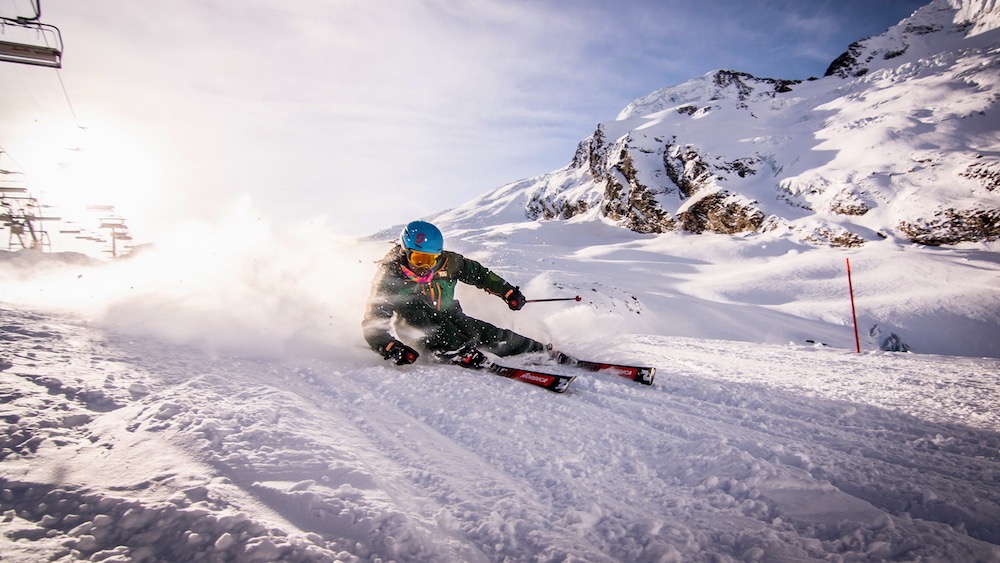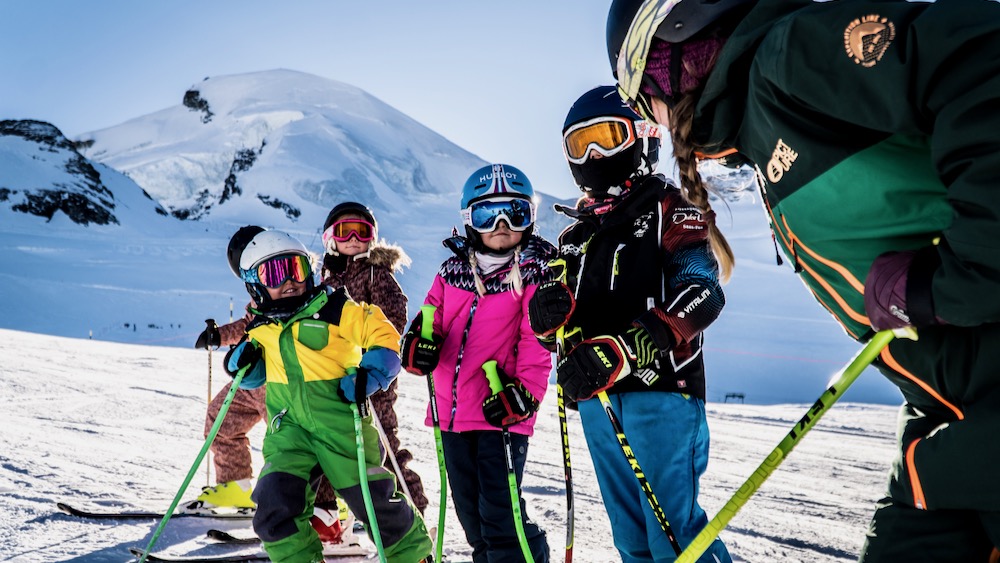Do you know the differences between recreational and competitive skiing? In this article, we want to show you what sets them apart, as each offers unique challenges and rewards. As skiers glide down snowy slopes, understanding the differences in equipment, terrain suitability, and goals is essential for both enthusiasts and seasoned athletes.
Discover the techniques and skills that distinguish relaxed skiing from its competitive counterpart. From addressing injury risks to overcoming psychological challenges, we’ll explore the physical and mental demands that skiers face in each discipline.
Keep reading and let’s learn these differences together!
Content
Recreational vs. competitive skiing: what makes them unique?
Equipment differences: skis, bindings, and more
Understanding the distinctions between recreational and competitive skiing starts with the equipment used. In recreational skiing, enthusiasts often prefer versatile skis that cater to a wide range of conditions. These skis are usually designed for comfort and ease of use, making them ideal for leisurely slopes.
In contrast, competitive skiing requires specialized equipment fine-tuned for speed and precision. Alpine skiing, a prevalent form of competitive skiing, utilizes fixed-heel bindings that securely attach both the toe and heel to the boot. This setup increases stability and control at high speeds.
Terrain and environment: where each type thrives
Both recreational and competitive skiing thrive in distinct environments. Recreational skiing is enjoyed in a variety of terrains, from gentle slopes to challenging mountain trails. Ski resorts worldwide cater to recreational skiers, offering groomed pistes, ski schools, and leisurely activities.
Conversely, competitive skiing events take place on specially designed courses that test the athlete’s speed and skill. Alpine skiing events, for instance, often occur on steep and icy slopes, demanding precision and technique.
Skill levels: from beginners to pros
The skill requirements for recreational and competitive skiing also differ markedly. Recreational skiing is accessible for those of all skill levels, from beginners mastering the basics to intermediate skiers refining their technique. It’s an inclusive activity, allowing individuals to progress at their own pace.
In contrast, competitive skiing demands advanced skills and significant experience. Athletes train extensively to excel in specific disciplines, such as ski jumping or ski mountaineering. They must develop both physical skills and mental resilience to handle the pressures of competition.
- Beginner Level: Focuses on foundational skills like stopping, turning, and balance.
- Intermediate Level: Improves on techniques and explores various terrains and conditions.
- Professional Level: Involves specialized training for competitive events, requiring mastery of complex techniques and strategies.
Purpose and goals: leisure vs. competition
At its core, recreational and competitive skiing differ in purpose and intent. For recreational skiers, the main goal is enjoyment and relaxation. They embrace the experience of gliding over the snow, appreciating the beauty and serenity of nature.
On the other hand, competitive skiing revolves around performance and achievement. Athletes strive to win titles, break records, and continually push their limits. The focus is on measurable success, with rigorous training and performance optimization.
Techniques and skills: how recreational and competitive skiers differ
Techniques used in recreational skiing
Skiing recreationally is often about enjoyment and the thrill of the ride rather than precision. Many of us find that recreational skiing focuses on basic techniques that ensure safety and fun.
One of the primary techniques used is the snowplow. This technique involves positioning the skis in a V-shape, which helps control speed and provides stability, particularly for beginners.
Parallel turns come into play as we become more comfortable. This method involves keeping the skis parallel to each other and achieving a fluid motion while turning from side to side.
Typically, recreational skiers focus on easy and intermediate slopes, which require less aggressive techniques compared to steeper terrains.
While recreational skiing emphasizes enjoyment and relaxation, techniques are still essential for safety and enhancing the experience. Do these simple techniques make the sport more accessible to beginners?
Competitive skiing techniques and training
Unlike recreational skiing, competitive skiing demands precision and technique at high speeds. Competitive skiers must master specific skills that allow them to navigate the courses efficiently.
One advanced technique is the carving turn, which involves making precise, sharp turns using the edges of the skis. This technique is crucial for maintaining speed on steeper slopes.
Additionally, pole planting is widely used in competitive skiing. This involves planting the ski poles to help with balance and timing during turns.
- Carving Turns: Sharp, precise turns using ski edges to maintain speed and control.
- Pole Planting: A technique for maintaining balance and timing during turns.
- Slalom Techniques: Specific methods for quickly navigating slalom courses.
Intensive training regimens focus on building endurance and agility, and transitioning between these techniques seamlessly. Could the mental focus required be the key difference in competition?
Skill development: leisure vs. professional training
Developing skills for skiing can vary significantly depending on one’s goals. Recreational skiers typically take lessons to learn basic skills and improve confidence on the slopes.
In contrast, professional training is rigorous and often involves a mix of on-slope and off-slope practices. It’s common for competitive skiers to engage in strength training and endurance exercises.
Both types of skiers can benefit from tailored coaching that targets their specific goals. Aspiring competitive skiers might wonder how to balance fun and sportsmanship when developing their skills.
Injury risks and safety measures in recreational vs. competitive skiing
Common injuries in recreational skiing
For recreational skiers, skiing is all about fun and thrill, but it comes with its share of dangers. While skiing on the slopes, we can experience a variety of injuries that are specific to the activity.
One of the most frequent injuries is the sprained knee. The twisting motion during turns can often lead to this painful condition, particularly affecting the ACL or meniscus. An example might be hitting an unexpected icy patch, causing the skier to twist awkwardly.
Another common injury is shoulder dislocation. How many times have we seen someone take a tumble and try to break their fall with an outstretched arm? This reflex action often leads to shoulder injuries.
Wrist fractures also occur quite often, especially when skiers attempt to catch themselves during a fall with their hands. The sudden impact can cause serious damage to the wrist.
Let’s not forget about head injuries, which can range from mild concussions to severe trauma. Even a simple loss of balance can result in dangerous head impacts.
Being aware of these injuries is the first step toward prevention and ensuring a safe skiing experience.
Injury prevention in competitive skiing
Competitive skiing demands agility, speed, and precision, but it also increases the risk of more severe injuries. Unlike recreational skiing, preventive measures are integral to training regimes.
We must focus on strengthening exercises that toughen up critical muscle groups. Strong muscles act as a cushion, absorbing shocks and reducing strain on bones and joints.
Proper technique training is essential, as poor form can lead to high-impact falls. Even seasoned competitors can benefit from revisiting basic techniques.
Regular conditioning also plays a role in keeping a competitive skier injury-free. Robust cardiovascular health ensures that a skier can handle rigorous activity without undue fatigue.
By adhering to these preventive strategies, competitive skiers can significantly reduce their injury risks.
Safety gear: helmets, pads, and more
Safety gear is a non-negotiable for skiers, whether they are hitting the slopes for fun or training for competition. Essential equipment can make a substantial difference in injury prevention.
Helmets are a must-wear for every skier. They protect against head injuries that could otherwise be life-threatening.
Consider protective pads. While helmets cover the head, pads safeguard elbows, knees, and other vulnerable areas, absorbing impacts during falls.
Additionally, investing in goggles enhances visibility and shields eyes from snow glare, reducing the risk of accidents.
Appropriate clothing is another factor to consider. Ski jackets and pants designed for cold weather not only offer warmth but also feature reinforcements to minimize injury in case of falls.
Adopting the right gear equips skiers with both protection and confidence to tackle any slope.
Psychological aspects of injury recovery
Recovering from a skiing injury is a journey that extends beyond physical healing. The psychological impacts can often be just as challenging.
Injured skiers may experience a loss of confidence, fearing a return to the slopes might lead to another injury. This fear can be debilitating.
It’s not uncommon to face anxiety about one’s physical abilities post-recovery. Will we ever be able to ski at the same level again?
Engaging with support groups or working with a therapist can be beneficial. Sharing experiences and gaining reassurance from peers can be a powerful motivator.
Set realistic goals during recovery phases. Seeing steady progress can build confidence and motivate individuals to pursue their skiing passions with renewed vigor.
Understanding these psychological hurdles and actively addressing them is key to a full recovery and successful return to skiing activities.

Mental challenges: overcoming psychological barriers in skiing
Anxiety and performance pressure in competitive skiing
Competitive skiing places athletes under intense pressure, as their performance is constantly evaluated. The stakes are high, with expectations from coaches, family, and themselves creating a stressful atmosphere. Does this pressure amplify anxiety levels? Undoubtedly, it does.
One major anxiety source for skiers is the fear of underperforming. This fear isn’t just about not winning; it’s about failing to meet perceived expectations. Imagine standing atop a snowy peak, knowing a single misstep could spell disaster for months of training.
Moreover, the constant comparison with peers compounds this pressure. It’s easy to feel inadequate when seeing other skiers achieve faster times or smoother runs. Such comparisons can hinder performance if not managed properly.
How can we address these pressures? Tailoring mental skills training to include techniques such as mindfulness and positive visualization can offer relief. By focusing on their own progress, athletes can shift their mindset from anxiety-driven to growth-oriented.
Confidence building in recreational skiing
Confidence is crucial for recreational skiers who wish to enjoy the sport fully. Many skiers face the mental barrier of self-doubt, especially when returning after a break or injury.
Recreational skiers might not face the same pressures as competitive skiers, yet the inner critic can be just as nagging. This silent judge questions their ability to conquer slopes, leading to hesitancy and reduced enjoyment.
Confidence can blossom through these strategies:
- Celebrating small wins: Acknowledge improvements, no matter how small. This builds gradual confidence.
- Setting realistic goals: Avoid setting the bar too high initially to prevent undue stress.
- Seeking feedback: Constructive feedback from experienced skiers can reinforce self-belief.
Just as a toddler gains confidence through every successful step, skiers too can build their confidence gradually, eventually conquering more challenging slopes with ease.
Techniques to overcome fear and mistakes
Fear is a common experience, whether you’re a seasoned skier or a novice. Conquering fear involves understanding its root. Is it the threat of falling or the anticipation of a mistake? Perhaps it’s the fear of unknown terrains.
It’s crucial to remember that mistakes are inevitable—part of the learning curve. Even the most skilled athletes stumble and fall. What differentiates them is how they respond to errors.
Here are some methods to help skiers overcome their fears:
- Visualization Techniques: Picture yourself successfully navigating through tough slopes.
- Breathing Exercises: Deep, controlled breaths can calm nerves before a run.
- Progressive Exposure: Gradually increase difficulty levels to build comfort.
Through these techniques, fear transitions from a paralyzing force to a catalyst for growth. Skiers learn to embrace errors as stepping stones to mastery.
Mental training for optimal performance
Mental training is paramount for skiers aiming to perform at their best. It’s much like an unseen layer of armor, protecting and enhancing performance. Do mental skills truly create this edge? Evidence suggests they do.
Unlike physical training, mental conditioning focuses on aspects such as focus, resilience, and emotional regulation. These are not innate; they require practice and patience. How does one train the mind to support skiing prowess?
Mental training can include:
- Goal Setting: Establish clear, measurable objectives to maintain motivation.
- Self-Talk: Reinforce positive dialogue to counteract doubt.
- Focus Drills: Exercises that heighten concentration and clarity under pressure.
Through consistent practice, mental training techniques fortify a skier’s ability to tackle challenges head-on. They respond to setbacks with poise, turning potential obstacles into opportunities for improvement.
The role of skiing communities: from casual groups to professional teams
Building community in recreational skiing
Recreational skiing communities thrive on a sense of camaraderie and shared enjoyment of the sport. These groups often form around common interests and leisure activities, such as exploring new slopes or hosting social events.
In recreational settings, skiing is less about competition and more about experiencing joy and relaxation on the mountain. These communities prioritize fun and casual interaction, making it easy for newcomers to join and feel welcomed.
The focus tends to be on inclusivity and developing friendships among members, often resulting in a relaxed and supportive atmosphere.
Where do these groups typically meet? You might find them congregating at local ski resorts or through online platforms dedicated to skiing enthusiasts.
Another unique aspect is the variety of activities they offer beyond skiing itself, like après-ski gatherings or group trips.
Team dynamics in competitive skiing
In contrast to recreational groups, competitive skiing communities revolve around performance and achievement. These teams are built on a foundation of discipline and dedication, with members pushing each other to excel.
The primary focus is on training and improving skills, often resulting in a highly structured and goal-oriented environment.
How do these teams operate? They frequently adhere to a rigorous schedule and rely heavily on the expertise of coaches and trainers.
While the intensity is high, the bonds formed within these teams are often strong, stemming from shared experiences in competitions and training.
Networking opportunities in skiing
Whether recreational or competitive, skiing communities present incredible networking opportunities. Connections made on the slopes can lead to lifelong friendships and professional collaborations.
Have you ever considered how skiing could open doors to new social circles and professional ventures? The shared passion for the sport often translates into mutual respect and trust.
Recreational skiing tends to foster more relaxed, organic interactions, whereas competitive skiing provides structured events where networking is encouraged.
In both environments, the key is to engage with others, share experiences, and cultivate relationships that extend beyond skiing.
Social and cultural aspects of skiing
The social and cultural dimensions of skiing communities contribute significantly to their unique character. These aspects can vary greatly between recreational and competitive settings.
Recreational skiing often embraces a laid-back culture, celebrating diversity and individual expression. These groups may host themed events, charity ski days, or family-friendly outings.
Why is this important? It fosters a sense of identity and belonging, allowing individuals to connect through shared cultural values and traditions.
Conversely, competitive skiing tends to emphasize tradition and excellence. Uniformity in values and goals helps unite team members under a common banner.
The cultural tapestry of skiing is rich and varied, offering something for everyone, whether they seek leisurely enjoyment or competitive thrill.
Recreational and competitive skiing differ in equipment, terrain, and skill focus. Recreational skiers enjoy diverse slopes at a leisurely pace, while competitive skiers prioritize precision and speed through specialized training and gear. Safety is key in both, with proper equipment helping prevent injuries.
Understanding these differences deepens your appreciation for skiing and offers ways to connect with supportive ski communities. Whether you’re hitting the slopes for fun or pursuing competition, knowledge, practice, and passion will help you thrive.
Ready to take it up a notch? Ski Racing offers expert competitive skiing classes to help you refine your skills and make smarter bets in the ski world. Take the next step in your skiing journey with Ski Racing and unlock your full potential on the slopes!

